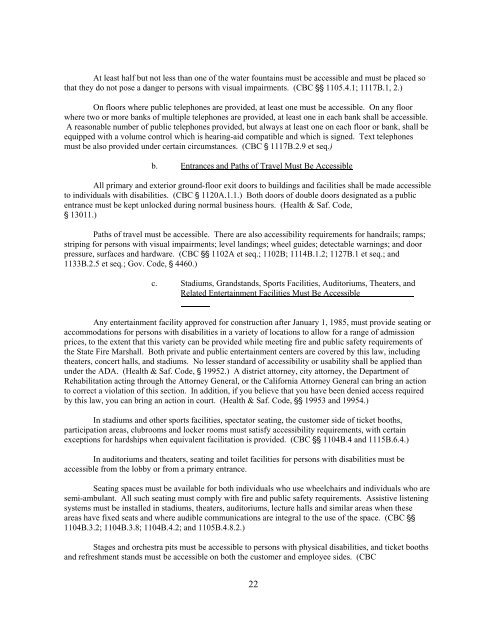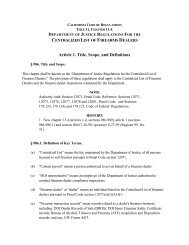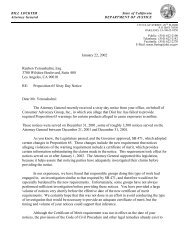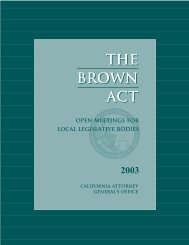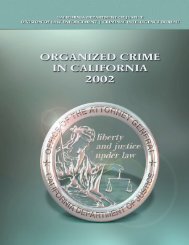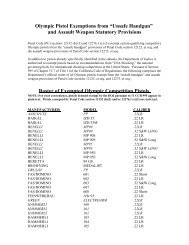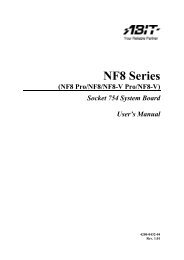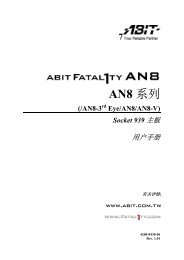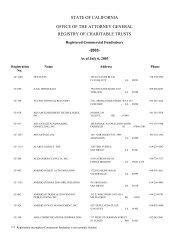Legal Rights of Persons With Disabilities - Ossh.com
Legal Rights of Persons With Disabilities - Ossh.com
Legal Rights of Persons With Disabilities - Ossh.com
You also want an ePaper? Increase the reach of your titles
YUMPU automatically turns print PDFs into web optimized ePapers that Google loves.
At least half but not less than one <strong>of</strong> the water fountains must be accessible and must be placed so<br />
that they do not pose a danger to persons with visual impairments. (CBC '' 1105.4.1; 1117B.1, 2.)<br />
On floors where public telephones are provided, at least one must be accessible. On any floor<br />
where two or more banks <strong>of</strong> multiple telephones are provided, at least one in each bank shall be accessible.<br />
A reasonable number <strong>of</strong> public telephones provided, but always at least one on each floor or bank, shall be<br />
equipped with a volume control which is hearing-aid <strong>com</strong>patible and which is signed. Text telephones<br />
must be also provided under certain circumstances. (CBC ' 1117B.2.9 et seq.)<br />
b. Entrances and Paths <strong>of</strong> Travel Must Be Accessible<br />
All primary and exterior ground-floor exit doors to buildings and facilities shall be made accessible<br />
to individuals with disabilities. (CBC ' 1120A.1.1.) Both doors <strong>of</strong> double doors designated as a public<br />
entrance must be kept unlocked during normal business hours. (Health & Saf. Code,<br />
' 13011.)<br />
Paths <strong>of</strong> travel must be accessible. There are also accessibility requirements for handrails; ramps;<br />
striping for persons with visual impairments; level landings; wheel guides; detectable warnings; and door<br />
pressure, surfaces and hardware. (CBC '' 1102A et seq.; 1102B; 1114B.1.2; 1127B.1 et seq.; and<br />
1133B.2.5 et seq.; Gov. Code, ' 4460.)<br />
c. Stadiums, Grandstands, Sports Facilities, Auditoriums, Theaters, and<br />
Related Entertainment Facilities Must Be Accessible<br />
Any entertainment facility approved for construction after January 1, 1985, must provide seating or<br />
ac<strong>com</strong>modations for persons with disabilities in a variety <strong>of</strong> locations to allow for a range <strong>of</strong> admission<br />
prices, to the extent that this variety can be provided while meeting fire and public safety requirements <strong>of</strong><br />
the State Fire Marshall. Both private and public entertainment centers are covered by this law, including<br />
theaters, concert halls, and stadiums. No lesser standard <strong>of</strong> accessibility or usability shall be applied than<br />
under the ADA. (Health & Saf. Code, ' 19952.) A district attorney, city attorney, the Department <strong>of</strong><br />
Rehabilitation acting through the Attorney General, or the California Attorney General can bring an action<br />
to correct a violation <strong>of</strong> this section. In addition, if you believe that you have been denied access required<br />
by this law, you can bring an action in court. (Health & Saf. Code, '' 19953 and 19954.)<br />
In stadiums and other sports facilities, spectator seating, the customer side <strong>of</strong> ticket booths,<br />
participation areas, clubrooms and locker rooms must satisfy accessibility requirements, with certain<br />
exceptions for hardships when equivalent facilitation is provided. (CBC '' 1104B.4 and 1115B.6.4.)<br />
In auditoriums and theaters, seating and toilet facilities for persons with disabilities must be<br />
accessible from the lobby or from a primary entrance.<br />
Seating spaces must be available for both individuals who use wheelchairs and individuals who are<br />
semi-ambulant. All such seating must <strong>com</strong>ply with fire and public safety requirements. Assistive listening<br />
systems must be installed in stadiums, theaters, auditoriums, lecture halls and similar areas when these<br />
areas have fixed seats and where audible <strong>com</strong>munications are integral to the use <strong>of</strong> the space. (CBC ''<br />
1104B.3.2; 1104B.3.8; 1104B.4.2; and 1105B.4.8.2.)<br />
Stages and orchestra pits must be accessible to persons with physical disabilities, and ticket booths<br />
and refreshment stands must be accessible on both the customer and employee sides. (CBC<br />
22


